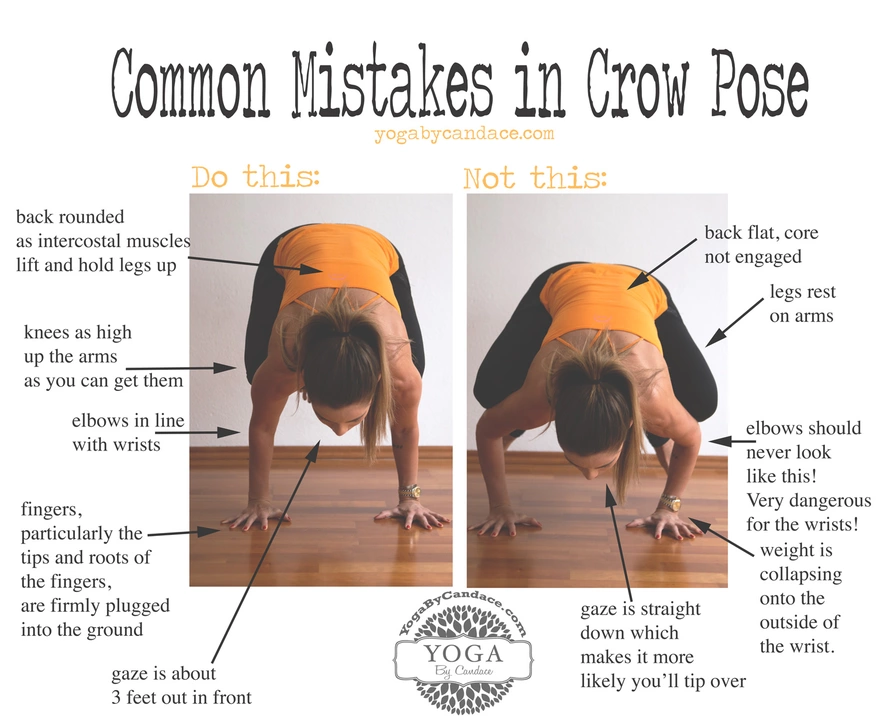Understanding the Crow Pose
The crow pose, or Bakasana, is a challenging yoga pose that requires balance, strength, and focus. It involves balancing your body weight on your hands while your knees are tucked close to your armpits. Although it may seem intimidating at first, the crow pose is an excellent way to build upper body strength and improve balance. However, one common issue that many people face is their knees slipping during the pose. In this article, we'll explore some tips and techniques to help you prevent your knees from slipping and master the crow pose.
Building a Strong Foundation
One of the most important aspects of any yoga pose is having a strong foundation. For the crow pose, this means having a solid grip on the ground and engaging your core muscles. To achieve this, start by spreading your fingers wide and pressing your palms firmly into the ground. Focus on pushing through the base of each finger, particularly the knuckles, to help distribute your weight evenly. Additionally, engage your core muscles to provide extra stability and support. By creating a strong foundation, you'll be less likely to experience slipping knees during the crow pose.
Proper Alignment and Technique
Another key factor in preventing your knees from slipping is proper alignment and technique. When entering the crow pose, begin by squatting down with your feet shoulder-width apart. Place your hands on the ground in front of you, shoulder-width apart, with your fingers spread wide. Next, lift your hips and engage your core as you lean forward, bringing your knees to the backs of your upper arms. Be sure to keep your gaze slightly forward and avoid rounding your back. Proper alignment and technique will help you maintain balance and reduce the likelihood of slipping knees.
Warming Up and Stretching
Warming up and stretching before attempting the crow pose can help improve your flexibility and reduce the risk of slipping knees. Begin your practice with a few rounds of Sun Salutations or other dynamic movements to warm up your muscles and joints. Then, incorporate some hip-opening stretches, such as Pigeon Pose or Garland Pose, to help prepare your body for the crow pose. By warming up and stretching properly, your body will be better equipped to handle the demands of the crow pose, making it less likely that your knees will slip.
Using a Yoga Mat or Towel
A slippery surface can make it even more challenging to maintain the crow pose without your knees slipping. To combat this, consider using a yoga mat or towel to provide extra traction and support. Choose a mat with a non-slip texture, or place a towel over your existing mat to improve grip. This additional support can make a significant difference in preventing your knees from slipping during the crow pose.
Practicing with a Block
If you're still struggling with slipping knees, try practicing the crow pose with a yoga block. Place the block on the ground in front of you and rest your forehead on it as you attempt the pose. This added support can help you focus on engaging your core and maintaining proper alignment, rather than worrying about slipping knees. As you become more comfortable and confident in the pose, you can gradually remove the block and practice without it.
Strengthening Your Grip
Having a strong grip is essential for maintaining balance in the crow pose and preventing your knees from slipping. To improve your grip strength, try incorporating some hand, wrist, and forearm exercises into your yoga practice or workout routine. These can include wrist curls, finger push-ups, and squeezing a stress ball or grip trainer. A stronger grip will make it easier to maintain the crow pose and reduce the risk of slipping knees.
Patience and Practice
Finally, remember that the crow pose is a challenging posture that requires patience and practice to master. Don't be discouraged if your knees continue to slip at first – this is a common issue that many people face. Instead, focus on the tips and techniques outlined in this article, and dedicate time to practicing regularly. With persistence and dedication, you'll eventually be able to prevent your knees from slipping in the crow pose and enjoy the many benefits this posture has to offer.
